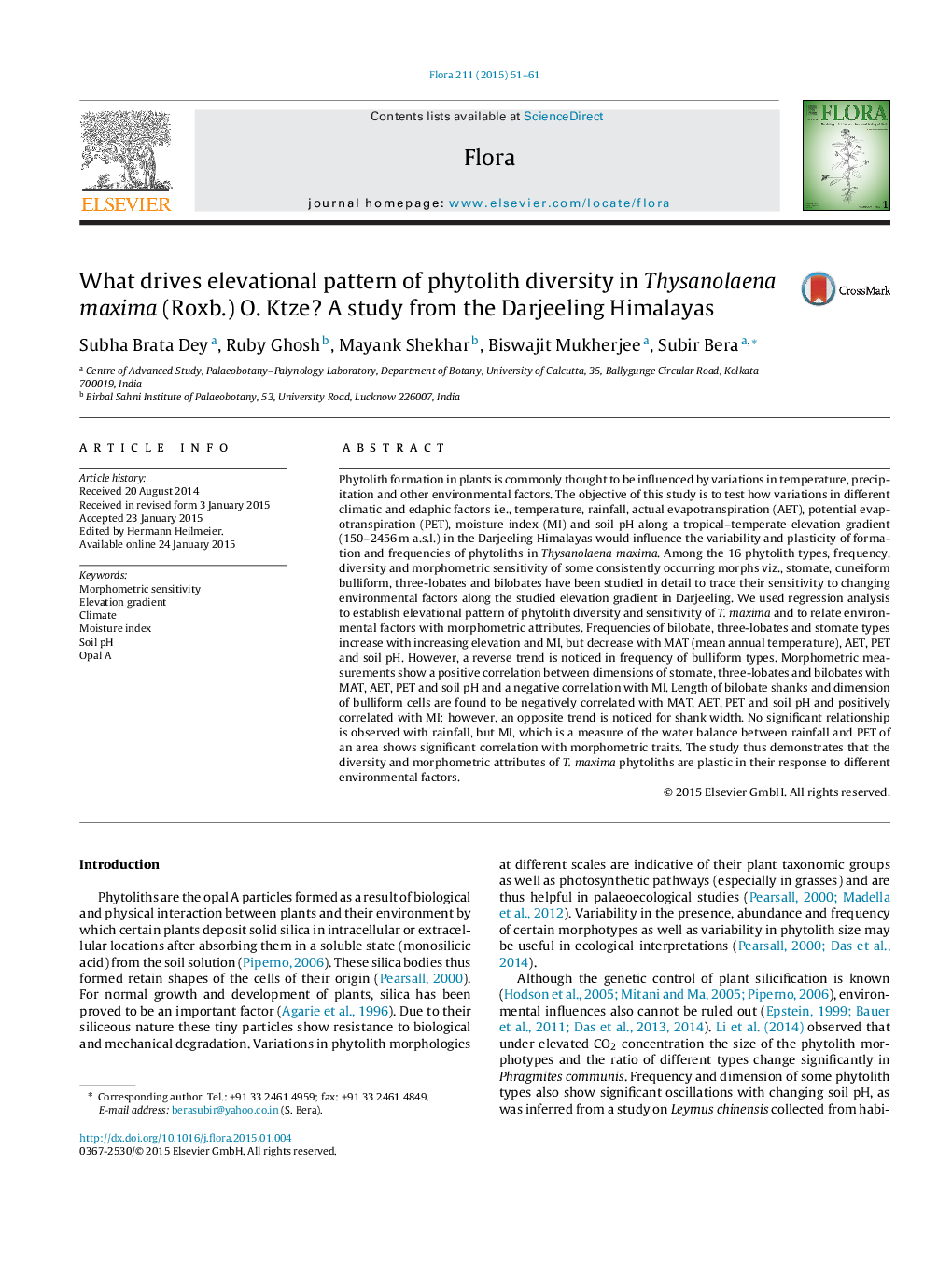| کد مقاله | کد نشریه | سال انتشار | مقاله انگلیسی | نسخه تمام متن |
|---|---|---|---|---|
| 2179445 | 1549948 | 2015 | 11 صفحه PDF | دانلود رایگان |

• Phytolith diversity in T. maxima along elevation gradient in Darjeeling Himalayas.
• Rainfall is not a limiting factor for opal A formation in T. maxima in Darjeeling.
• Interplay of water input and evapotranspiration is found to be most influencing.
• Tiger grass phytoliths are plastic in their response to environmental factors.
Phytolith formation in plants is commonly thought to be influenced by variations in temperature, precipitation and other environmental factors. The objective of this study is to test how variations in different climatic and edaphic factors i.e., temperature, rainfall, actual evapotranspiration (AET), potential evapotranspiration (PET), moisture index (MI) and soil pH along a tropical–temperate elevation gradient (150–2456 m a.s.l.) in the Darjeeling Himalayas would influence the variability and plasticity of formation and frequencies of phytoliths in Thysanolaena maxima. Among the 16 phytolith types, frequency, diversity and morphometric sensitivity of some consistently occurring morphs viz., stomate, cuneiform bulliform, three-lobates and bilobates have been studied in detail to trace their sensitivity to changing environmental factors along the studied elevation gradient in Darjeeling. We used regression analysis to establish elevational pattern of phytolith diversity and sensitivity of T. maxima and to relate environmental factors with morphometric attributes. Frequencies of bilobate, three-lobates and stomate types increase with increasing elevation and MI, but decrease with MAT (mean annual temperature), AET, PET and soil pH. However, a reverse trend is noticed in frequency of bulliform types. Morphometric measurements show a positive correlation between dimensions of stomate, three-lobates and bilobates with MAT, AET, PET and soil pH and a negative correlation with MI. Length of bilobate shanks and dimension of bulliform cells are found to be negatively correlated with MAT, AET, PET and soil pH and positively correlated with MI; however, an opposite trend is noticed for shank width. No significant relationship is observed with rainfall, but MI, which is a measure of the water balance between rainfall and PET of an area shows significant correlation with morphometric traits. The study thus demonstrates that the diversity and morphometric attributes of T. maxima phytoliths are plastic in their response to different environmental factors.
Journal: Flora - Morphology, Distribution, Functional Ecology of Plants - Volume 211, February 2015, Pages 51–61